 Asset Publisher
Asset Publisher
Forest cultivation
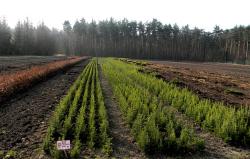 Szkółka leśna. Fot. Bartłomiej Wrażeń
Szkółka leśna. Fot. Bartłomiej Wrażeń
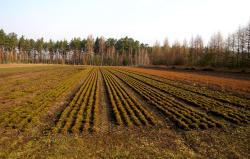 Szkółka leśna. Fot. Bartłomiej Wrażeń
Szkółka leśna. Fot. Bartłomiej Wrażeń
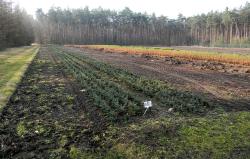 Szkółka leśna. Fot. Bartłomiej Wrażeń
Szkółka leśna. Fot. Bartłomiej Wrażeń
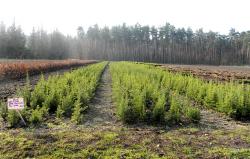 Szkółka leśna. Fot. Bartłomiej Wrażeń
Szkółka leśna. Fot. Bartłomiej Wrażeń
The most fundamental aim of forest cultivation is to preserve and enrich the existing forests (restocking) and to create new forests (forestation), with respect for natural conditions and processes. Forest cultivation includes collecting and keeping tree seeds, growing seedlings at nursery farms as well as starting, maintaining and protecting forest crops and tree stands.
In the period from 2001 to 2010 in Szprotawa Forest District nearly 1008 ha of forests were restocked in open fields and 276 ha of forests were restocked under cover of tree stands. Natural restocking delivered 26 ha of tree stands.
Soil cultivation and clearing
In the period from 2001 to 2010 total area of 1826.19 ha of land was cultivated in Szprotawa Forest District. In addition to this maintenance clearing known as "early clearing" (during cultivation) and "late clearing" (at the stage of young tree stand) was performed. Early clearing of newly started crops was performed in the area of over 1552 ha, and late clearing in the area of over 1571 ha. Forest Management Plan for the years 2011-2020 assumes performance of tasks at similar scale.
Nursery farm
Szprotawa Forest District includes a nursery farm with the area of 9.71 ha, where seedlings of about 20 species of trees and bushes are grown. Most of them are tree species of industrial importance, such as: Pine, Oak, Beech, Larch and Black Alder.
In Szprotawa Forest District the main source of seeds used for growing of seedlings are managed stands. According to data as of beginning of 2013 the stands cover the area of 192.64 ha. Seed production base consists of pine and oak stands.
On average the base supplies 1.2 million seedlings and cultivation is performed to meet own needs of the Forest District as well as the needs of local communities with the aim of forestation of former agricultural lands as part of the National Programme for Forestation of the Country.
 Asset Publisher
Asset Publisher
 Asset Publisher
Asset Publisher
Educational sites
Educational sites
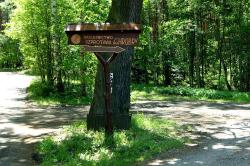 Tablica informacyjna. Fot. Jerzy Wilanowski
Tablica informacyjna. Fot. Jerzy Wilanowski
 Tablica informacyjna. Fot. Jerzy Wilanowski
Tablica informacyjna. Fot. Jerzy Wilanowski
Szprotawa Forest District can boast a variety of plant and animal species as well as many nature parks. Special educational sites have been designed to enable closer examination of this abundance and better understanding of the surrounding natural environment.
Szprotawa Forest District includes the following educational sites:
"Szlak Popielicy" (Edible Dormouse Trail) Educational Trail is located within "Buczyna Szprotawska" (The Beech Wood of Szprotawa) Nature Reserve where not only precious flora and fauna species, but also historic monuments and places of cultural interest can be admired. The places include a wooden shelter from 19th century, burial mounds dedicated to the late foresters and a stone signpost. Tourists who walk along the trail can admire old highland and lowland beech woods and come across one of the endangered species – Edible Dormouse.
There are 10 educational stops along the trail:
- Start of the trail – young pine stand created by planting.
- Fallen spruce stump.
- Hay rack and salt-lick for deer.
- Shady spruce forest.
- Linden tree stand.
- Canker on a 160-year-old beech.
- "Alternation of generations" – natural restocking.
- Commemorative burial mound from 19th century dedicated to a German Forest Inspector who managed town forests of Szprotawa.
- Shelter – located next to a clump of monumental Larch, Weymouth Pine, Scots Pine and Beech trees. A burial mound from 19th century at the back, a commemorative stone founded on 50th anniversary of Polish forestry on the right side of the road.
- Ancient forest with 160 to 190-year-old Beech trees.
The trail is about 2.2 km long.
Educational trail located within "Annabrzeskie Wąwozy" (Annabrzeskie Ravines) Nature Reserve is located in Małomice Sub-district and starts in the car park by the road from Zielona Góra to Wrocław.
Szprotawa Forest District has a number of dedicated stopping places for tourists walking along tourist and educational trails. They are located within "Buczyna Szprotawska" Nature Reserve and "Łabędzie Stawy" Area of Protected Ecology.
The Forest District runs its own nursery farm located in Krzywczyce, where lessons on origins of forests are held.
Other objects are also used for educational purposes. They include "Park Słowiański" (Slavic Park) Tourist and Educational Trail and "Wzgórza Bunkrowe" (Bunker Hills) Nature Sanctuary in Wiechlice.
"Park Słowiański" Trail is 6 km long and includes 21 educational stops, such as: Bóbr River; What is a natural monument?; Whip Alley; Wood Canker; The Castle of Chrobry; New Generation; Morphology of Graft Union; Temperate Deciduous Forest; Cavity-Nesting Birds; Polish "Liana" – Ivy; Old River Bed of Bóbr; Polish "Mangroves" – Willow Thickets; "Chorwackie" Quagmire; Forest on Water; What is land reclamation?; Bóbr Urstromtal; "Lagry" – curiosities of nature; Three worlds – field, meadow, forest; Ecological succession; Hunting – hay rack, salt-lick; Shady spruce forest and Heap of fallen Linden trees.
Tourists can enjoy a bonfire on a glade at the end of the trail. Guided tours are available upon request.
In the vicinity of over 750-year-old "Chrobry", the oldest Oak in Poland, visitors can enjoy tourist infrastructure that encourages them to learn more about this unique natural monument.





![„Naplotkowała sosna, że już się zbliża wiosna.[…] A wiosna przyszło pieszo - Już kwiaty z nią się śpieszą, Już trawy przed nią rosną I szumią: „Witaj wiosno!”. Jan Brzechwa - Przyjście Wiosny](/documents/1226291/0/Wiosna+1.jpg/8e6d02a0-5ffe-d486-49c3-5fac2b3b23c1?t=1711109156614&width=42)

